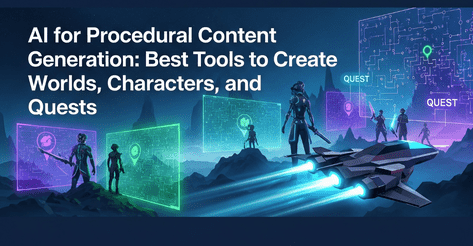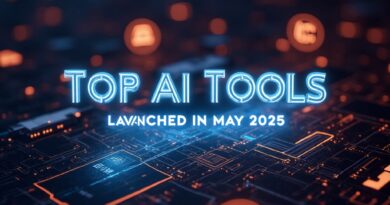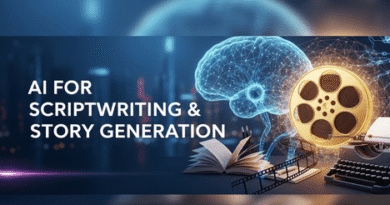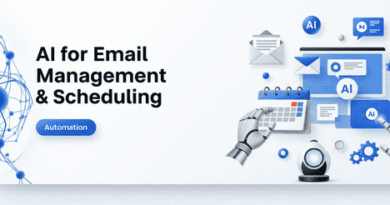AI for Procedural Content Generation
AI for Procedural Content Generation: Best Tools to Create Game Worlds, Characters, and Quests
What is Procedural Content Generation (PCG)?
Procedural Content Generation (PCG) refers to the automatic creation of game elements—like levels, maps, characters, and quests—using algorithms and rules. Instead of designing everything manually, developers can rely on AI to generate endless variations of content dynamically.
This technique is especially useful in modern gaming to:
-
Save development time
-
Enhance replayability
-
Personalize gameplay
-
Reduce production costs
How AI is Transforming Procedural Content Generation
Traditional PCG uses predefined rules, which can lead to repetitive content. However, with AI-enhanced PCG, developers can introduce:
-
Smarter adaptations based on player behaviour
-
Real-time generation of 3D environments
-
Personalized quests and storylines
-
Dynamic difficulty balancing
AI combines techniques like machine learning, natural language processing, and generative networks to produce content that feels natural and engaging, just like a human designer would create.
Also Read,
| Anthropic Claude 4: The Future of Safer and Smarter AI |
Top AI Tools for Procedural Content Generation
Here are some of the most powerful and beginner-friendly AI tools used to automate game world creation, character generation, and quest design:
🔹 Promethean AI
Use Case: Creating 3D environments
Promethean AI acts as a creative assistant that builds complex scenes based on your instructions. Simply describe what you need (e.g., “a cozy sci-fi lab”), and the AI recommends layouts, props, and placements.
-
Website: https://www.prometheanai.com
-
Example: Used by AAA studios to speed up world design workflows
🔹 Charisma.ai
Use Case: Interactive NPC dialogue and emotional character responses
Charisma brings non-playable characters to life using AI-generated conversation flows. You can define personalities, story arcs, and voice tones that evolve as players interact.
-
Website: https://www.charisma.ai
-
Example: Used in narrative-driven games and simulations
🔹 EndlessVN (Endless Visual Novel)
Use Case: Generating quest paths and story-driven dialogues
EndlessVN allows developers to write visual novels and quest narratives with AI. It uses language models to generate scenes, dialogue options, and character behaviours.
-
Platform: Open-source on GitHub
-
Example: Perfect for indie RPGs and choice-based adventure games
🔹 NVIDIA GauGAN / Canvas
Use Case: AI-generated textures and natural scenes
This tool converts simple drawings into photorealistic landscapes using Generative Adversarial Networks (GANs). It’s ideal for creating immersive backdrops and terrains.
-
Example: Artists can sketch rough scenes and instantly turn them into polished visuals
🔹 DungeonAI
Use Case: Designing dungeons, missions, and loot systems
DungeonAI automatically creates maps, enemies, quest lines, and rewards using smart logic. It adapts content based on gameplay style.
-
Website: https://dungeon.ai
-
Example: Ideal for roguelike games or dungeon crawlers
🔹 Ludo.ai
Use Case: Idea generation and early-stage game planning
Ludo.ai helps developers brainstorm game mechanics, characters, and level designs using AI-powered suggestions.
-
Website: https://www.ludo.ai
-
Example: Great for solo developers and game jam projects
Real-World Examples of AI-Generated Content in Games
Here are popular games that actively use procedural generation powered by AI:
-
No Man’s Sky: Over 18 quintillion planets created using algorithms and AI logic.
-
Minecraft: Each world is procedurally generated, allowing endless exploration.
-
Dwarf Fortress: Known for its incredibly deep world-building, from geography to mythology.
These games demonstrate the limitless potential of procedural generation in enhancing player experience and reducing manual workload.
AI in Generating Game Worlds
AI can create vast, explorable environments using terrain data, noise algorithms, and player behaviour. The result is a dynamic world that:
-
Changes with each playthrough
-
Includes diverse biomes, dungeons, and civilizations
-
Adapts difficulty based on player progression
AI in Character Design
AI tools can now design characters with:
-
Unique appearances, voices, and animations
-
Backstories that evolve over time
-
Emotions and personalities are driven by interaction history
Example: AI-generated avatars in Metahuman Creator and Ready Player Me are widely used in games and VR.
AI in Quest and Storyline Generation
AI tools like Inworld AI and GPT-based models can:
-
Write branching narratives and side quests
-
Adapt dialogue based on moral decisions
-
Create context-aware missions with logic and lore
This makes gameplay more engaging and personal for every player.
Advantages of AI-Driven Procedural Content Generation
| Benefit | Description |
|---|---|
| ⚡ Faster Development | Save time by automating repetitive tasks |
| 🧠 Intelligent Content | Quests and characters evolve naturally |
| 🎮 Better Replay Value | Every gameplay experience is different |
| 💸 Cost-Effective | Reduce the need for large dev teams |
| 🌍 Scalable | Perfect for open-world or sandbox games |
Challenges and Considerations
While AI-PCG is powerful, it also comes with challenges:
-
Quality Control: Generated content can feel repetitive or nonsensical without human refinement.
-
Ethics: Copyright concerns with AI-generated art or voices.
-
Debugging: Automatically generated maps or quests may introduce unexpected issues.
Getting Started with AI PCG: Beginner Tips
If you’re a student or aspiring developer, here’s how you can begin using AI in your projects:
-
Use Unity or Unreal Engine with AI plugins like Gaia or Houdini Engine.
-
Experiment with ChatGPT or Gemini for storyline generation.
-
Try visual tools like NVIDIA GauGAN for environment creation.
-
Use Charisma.ai or Inworld to add smart NPCs.
-
Start with simple 2D games to test procedural ideas before scaling up.
Conclusion: AI is Your Co-Developer
AI is no longer just a buzzword—it’s a powerful co-creator in the world of game development. Whether you’re designing an RPG, a sandbox world, or a visual novel, AI tools can accelerate your process and spark creativity.
As more developers embrace this technology, we’ll see richer worlds, smarter characters, and more immersive stories—all generated dynamically. The future of game development is not only code—it’s collaboration with AI.
📤 Stay Updated with NextGen Careers Hub
📱 Follow us on Instagram
📺 Subscribe to us on YouTube
Please share our website with others: NextGenCareersHub.in





